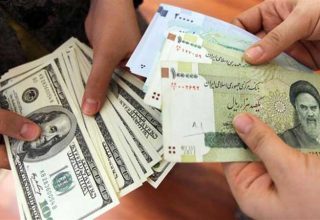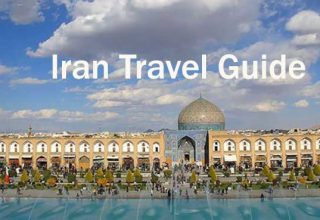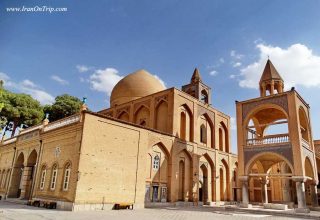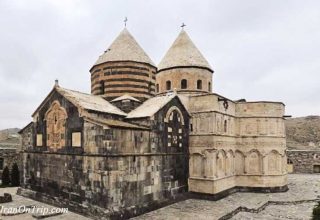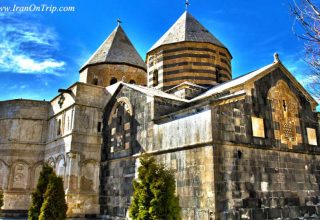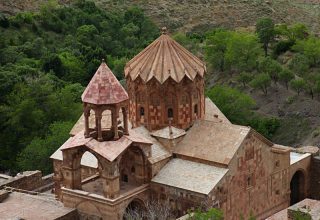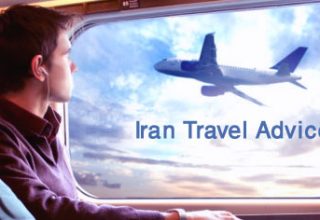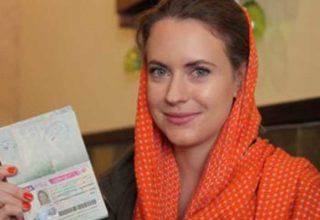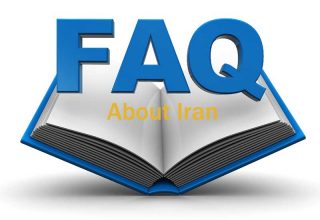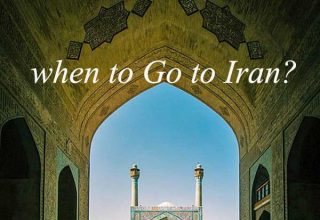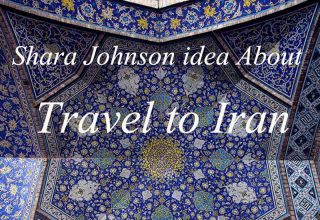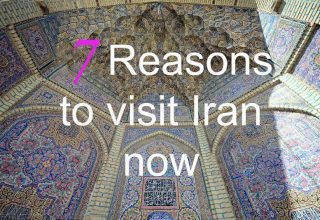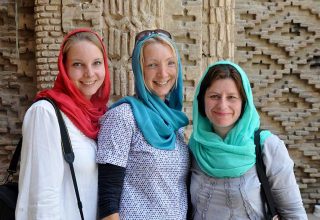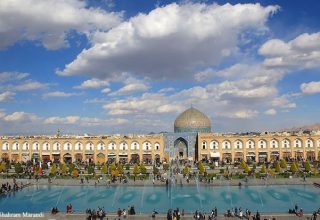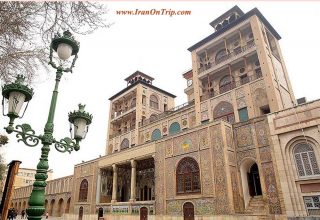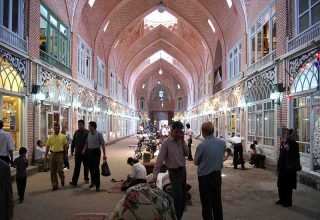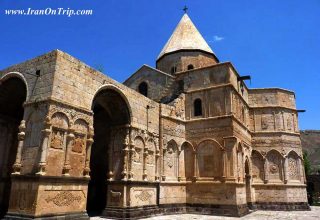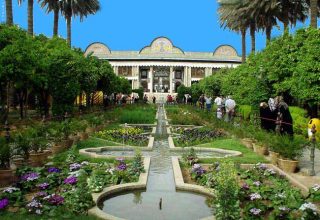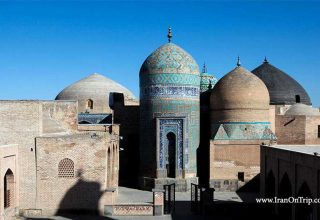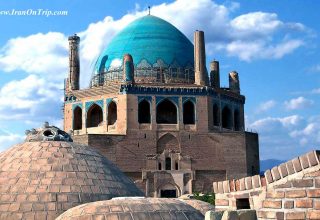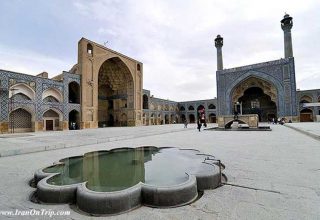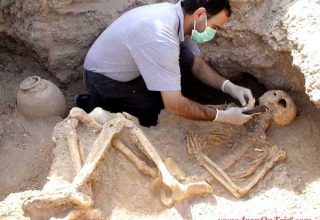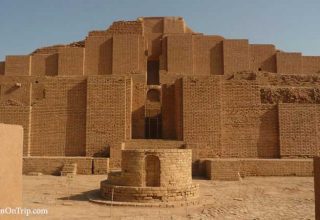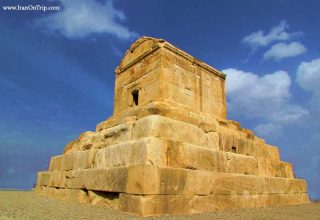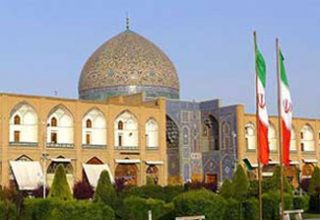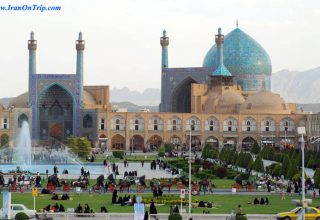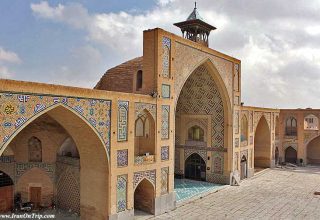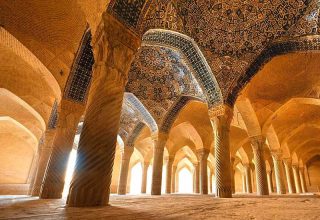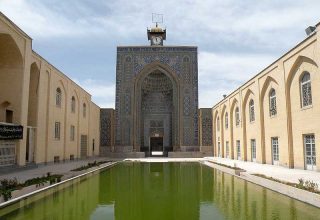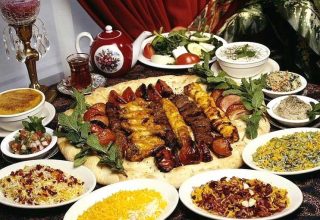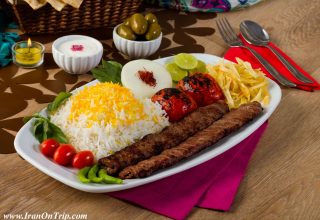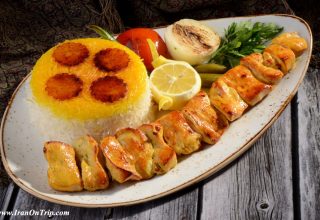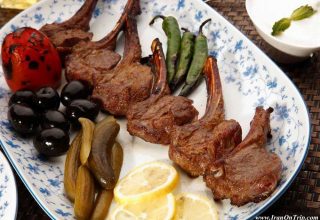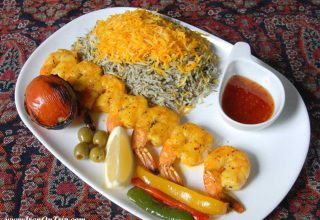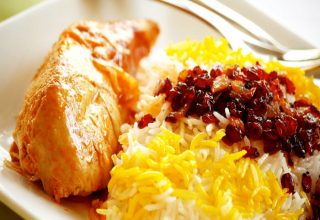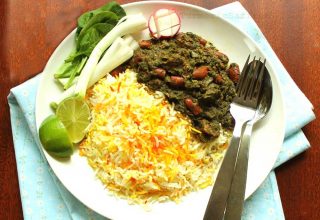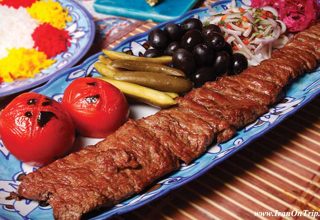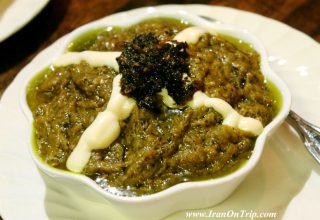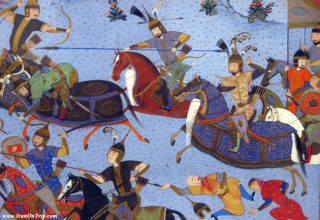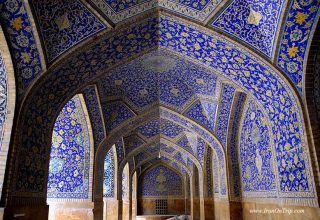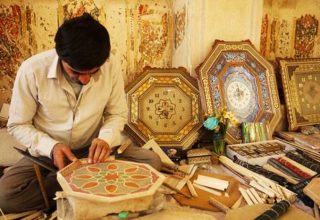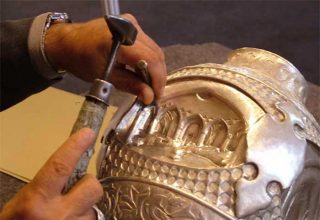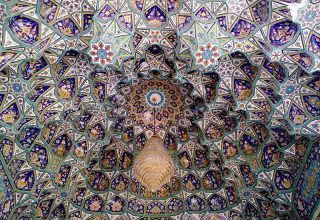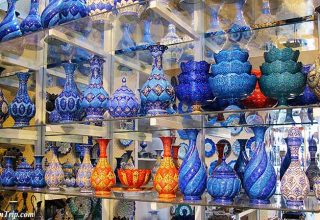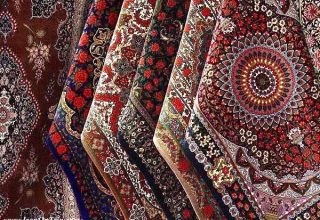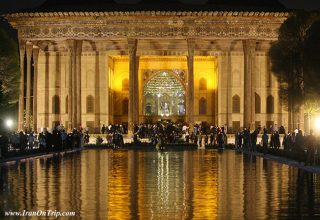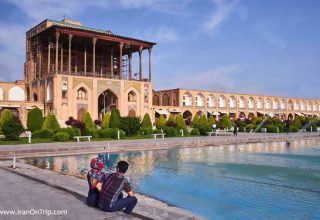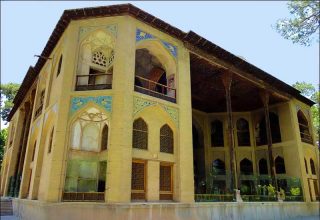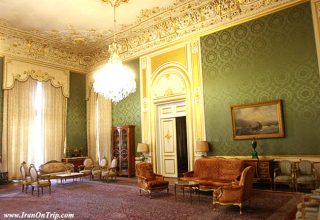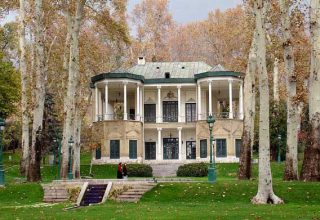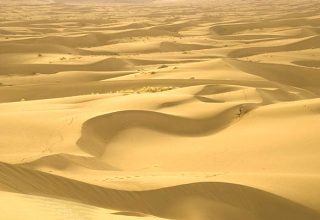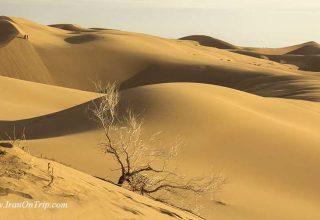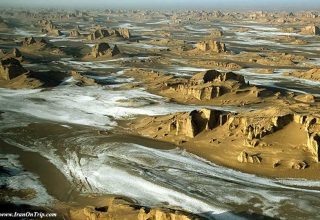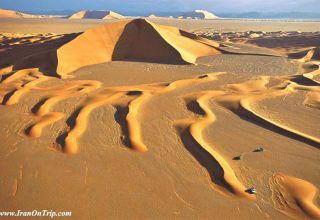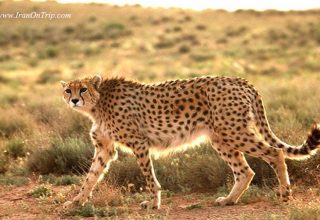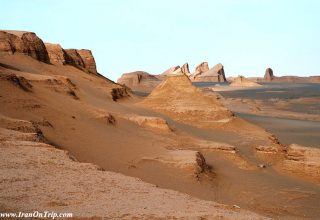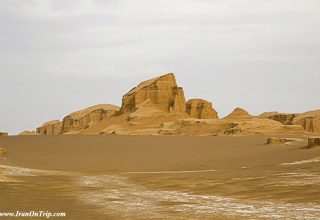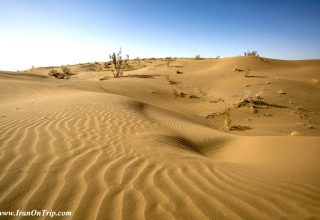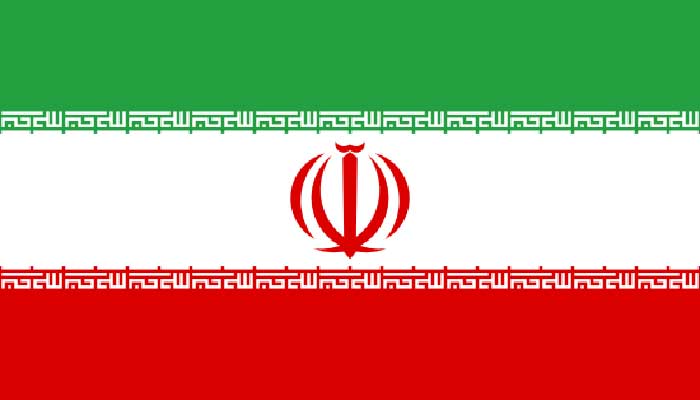
In Persian, the word Iran means “Land of the Aryans.”
Iran’s current flag was adopted on July 29, 1980
Where is Iran?
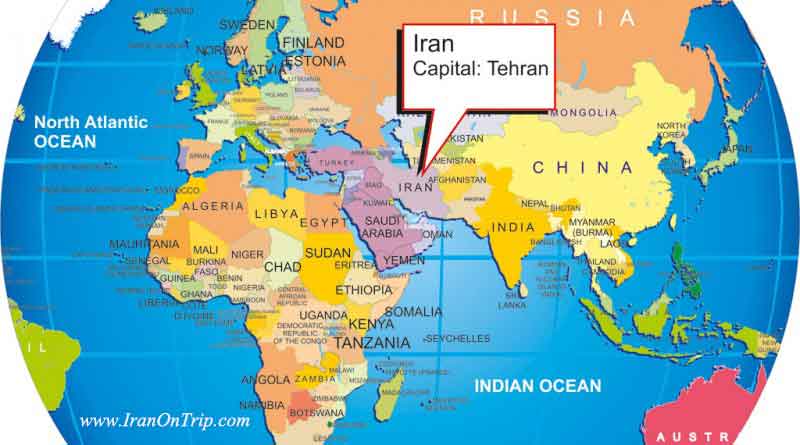
Iran is one of the oldest civilization focuses of the world.
It is more than nine thousand years old and it is one of the oldest countries. The history of settlement in Iran Flat goes back to the New Stone Age.
Iran is a deeply intriguing country, rich in cultural heritage and the legacy of ancient civilizations. This site aims to dispel some of the myths of this amazing country and present accurate information about Iran overall, its religious and historical monuments, natural attractions, and culture and art. It is hoped that this site proves valuable to those contemplating a trip to Iran, or who are simply interested in finding out more
Georgraphical Location:
Covering an area of 1,648,000 square kilometers, Iran is located in southwestern Asia. Total terrestrial borders of the country are 5,170 km. and total water borders are 2,510 km.
According to the latest divisions of the country, Iran is divided into 31 provinces.Name of the country: The Islamic Republic of Iran
National Slogan: Independence, Freedom, Islamic Republic
Capital: Tehran
Geographical coordinates: 35 41 N 51 25 E
Capital: Tehran
Language: Persian
Religion: Islam
President: Dr. Hassan Rouhani
National Day: 11 February
Population: 75,292,000
Currency unit: Iranian Rial
International dialing code: 0098
Internet Domain: ir
Exports: oil, carpet, fruits, dry fruits, pistachios, raisins, dates, leather, caviar, petrochemical products, apparels and dresses, foodstuffs.
Imports: machineries, industrial metals, medicines, chemical derivatives, electronics.
ahshahr port, Turkman port, Khoramshahr, Noshahr.
People of Iran
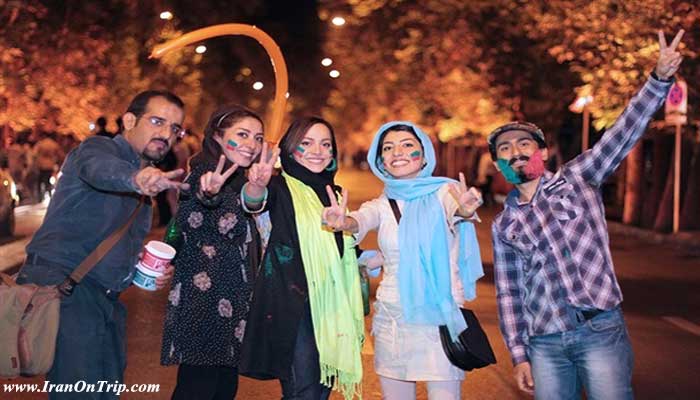
Iran is a diverse country consisting of people of many religions and ethnic backgrounds cemented by the Persian culture. The majority of the population speaks the Persian language, which is also the official language of the country, as well as other Iranian languages or dialects. Turkic languages and dialects, most importantly Azeri language, are spoken in different areas in Iran. Additionally, Arabic is spoken in the southwestern parts of the country. Religion in Iran is dominated by the Twelver Shi’a branch of Islam, which is the official state religion. About 4% to 8% of Iranians belong to the Sunni branch of Islam, mainly Kurds and Iran’s Balochi Sunni. The remaining 2% are non-Muslim religious minorities, including Zoroastrians, Jews, and Christians.
Culture of Iran
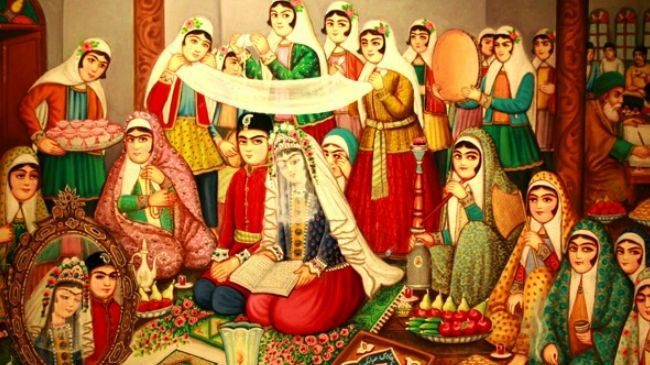
Iranian culture has long been a predominant culture of the Middle East and Central Asia, with Persian as the language of literate people and intellectuals during much of the 2nd millennium, and the language of religion and the populace before that. After converting to Islam, Iran as a fertile land, became place of birth for much of what later became known as Islamic learning, such as philology, literature, jurisprudence, philosophy, medicine, architecture, mathematics, chemistry, astronomy, geology and other sciences. The Iranian New Year (Nowruz), is an occasion traditionally celebrated on 21 March to mark the beginning of spring in nature. It is also celebrated in Afghanistan, Republic of Azerbaijan, Uzbekistan, Turkmenistan, Tajikistan, Kazakhstan and previously also in Georgia and Armenia. It is also celebrated by the Iraqi and Anatolian Kurds. Nowruz was registered on the list of Masterpieces of the Oral and Intangible Heritage of Humanity and described as the Persian New Year by the United Nations Educational, Scientific and Cultural Organization (UNESCO) in 2009.
History and culture
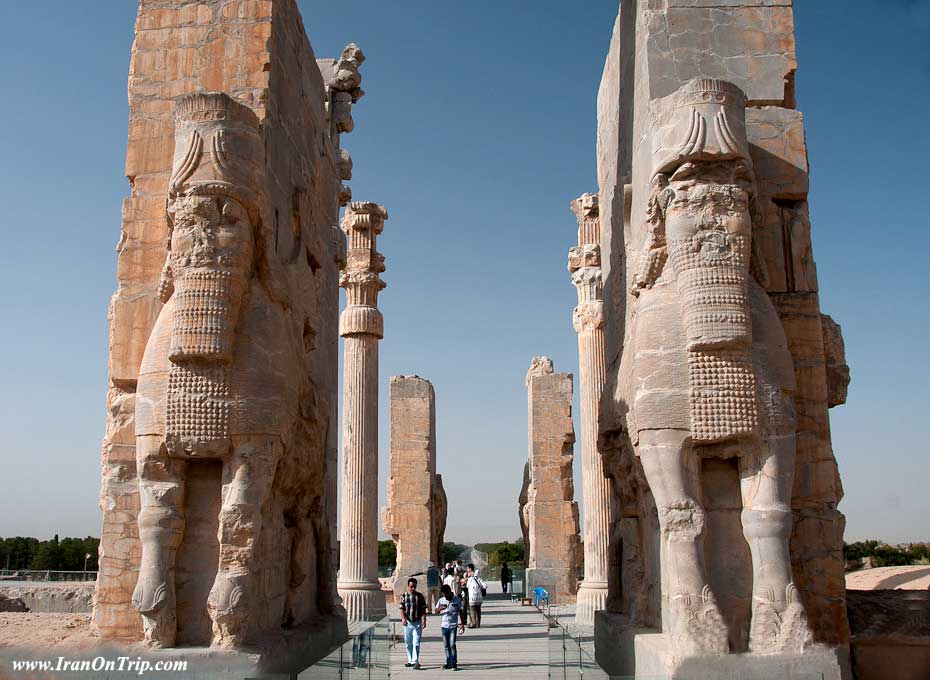
Iran is located between the valley of Sind and Tighris Euphrates, and at the extreme north of it the Caspian Sea, connecting the world of Sloves, with those of Tatars and Sythians. On the south it is linked with India and the Arab world. There are records of numerous ancient civilizations on the Iranian plateau before the arrival of Iranian tribes from Central Asia during the Early Iron Age.
The earliest archaeological artifacts in Iran were found in the Kashafrud and Ganj Par sites that date back to Lower Paleolithic. Mousterian Stone tools made by Neanderthal man have also been found. There are also 9000 year old human and animal figurines from Teppe Sarab in Kermanshah Province among the many other ancient artifacts. Evidence for Upper Paleolithic and Epipaleolithic periods are known mainly from the Zagros region in the caves of Kermanshah and Khoramabad. 7000 year old jars of wine excavated in the Zagros Mountains (now on display at The University of Pennsylvania) and ruins of 7000 year old settlements such as Sialk are further testament to this. Two main Neolithic Iranian settlements were the Zayandeh Rud civilization and Ganj Dareh. Elam was also one of main civilizations of Prehistoric Iran located in the east of Mesopotamia, which started from around 5000 BC, and lasted well into the 6th century BC. Another Iran’s main civilization of this time was the Jiroft Civilization in southeastern Iran. Recent excavations at the sites have produced the world’s earliest inscription which pre-dates Mesopotamian inscriptions. The history of this plateau dates back to far distant Milleniums but from the Fifth Millenium onward, traces of life have been found on the hill of Gian in Nahavand and Sialak near Kashan and Cheshmeh Ali. One can also see trace of human foot on the province and area of Medes, even in Susa and prehistoric mounds of Bacun in Pars province. There have been trace of art and existence of Aryan tribes who came to plateau of Iran via the eastern and western shores of the Caspian Sea from the end of the Second Millenium. This invading group migrated to Iran plateau with their families, cattles, livestocks, and tents in search of residential places and pastures. They were living in Kharazm and Jeyhoon.
The official document of history is exclusively related to inscriptions and what is connected with Medes is found by Assyrian tablets. According to these tablets Geshtrinas and Persians united together and overthrew the Assyrians. But there were other native and indigenous nations whose residence lasted for long centuries.For instance Kassite who came to this area 15 centuries earlier than Amadi and they had domination over Sumer and Babylion.
ryans, who came to this land later on were often threatened from north, west and south respectively by Uraturs, Assyrians and Elamites. The Medes are credited with the foundation of Iran as a nation and empire, and established the first Iranian empire, the largest of its day until Cyrus the Great established a unified empire of the Medes and Persians leading to the magnificent Achaemenian Empire. Cyrus the Great created the Cyrus Cylinder, considered to be the first declaration of human rights. He was the first king whose name has the suffix “Great” and the first Shah of Iran to be known by that title. Achaemenian ruled for about 200 years. Cyrus also banned slavery in all of the conquered areas that became the Persian Empire. Cyrus’ seminal ideas greatly influenced later human civilizations; Cyrus’ principles of ruling – advocating “love” rather than “fear” – influenced the original U.S. Constitution. After Cyrus’ death, his son Cambyses ruled for seven years and continued his father’s work of conquest, making significant gains in Egypt. A power struggle followed Cambyses’ death and, despite his tenuous connection to the royal line, Darius was declared king. He was to be arguably the greatest of the ancient Persian rulers. In 331 BC. the last king of this dynasty “Darius the Third” was defeated and overthrown by “Alexander the Macedonian”. After Alexander his successors, Seleucides, ruled Iran for 70 years and they intermingled with Iranians and promoted Hellenism in the area. Parthians, who considered themselves as heirs of Aryans defeated and overthrew Seleucides. They ruled 440 years in Iran and eventually were subdued by Sassanids who were at that time governing Pars province. They were a branch of Aryans who had come to the area via Sistan and Kerman. Sassanids ruled for 400 years until Arabs conquest of Persians in the 7th century. The Arab warriors swept across the Iranian plateau and toppled the Sassanid dynasty. Many of the healthy architectural remains of Iran are related to this golden era in Persian history. It was in this period that Zoroastrianism becomes state religion of the Sassanian Empire and played an important role in everyday’s traditions and beliefs. The Iranian Prophet Zoroaster is considered by numerous schola
Natural of Iran
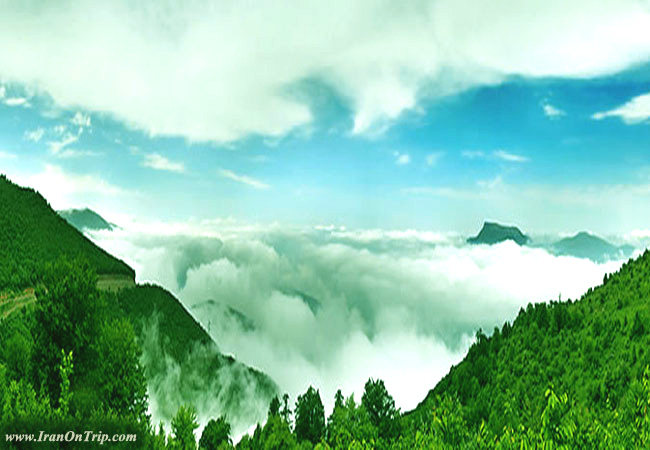
Taking the choice to travel to Iran, you better leave your preconceptions at home and expect to be surprised. As regards to the number and variety of its archeological sites and relics, Iran is considered as one of the ten most important countries in the world, but looking at its astonishing geographical features culminated into the huge natural diversity for a country the size of Iran ,
it is rated among the top 5 in the earth. The geographical contrasts and its location in the heart of some different ecological regions have made it the first class choice for many nature lovers. The wide range of temperature, from as low as -20°C in the northern mountains to as high as +40° in the south in a single day along with the existence of high mountains as well as flat plains, desert areas, rivers and lakes contributing to unique ecological conditions in which, at any time of the year, and in each section of the country, one of the four seasons is visible. Thus, many species of flora and fauna are available in almost every season of the year.
The range of rainfall can vary remarkably in the different but close areas of Iran . While Kavir-e Lout (in the south eastern parts of Iran) tolerates the average rainfall of near zero, Gilan province- in the north of the country- will enjoy of a heavy 2000 millimeters in year, as a result, it is no wonder that the Kavir-e Lout can be easily well over compared to the driest and hottest deserts in the planet, while Gilan is home to the greenest forests of the Middle East. The two well-known deserts of Iran , Kavir-e Lout and Dasht-e-Kavir , covering an area of over 360,000 square kilometers, are amongst the most interesting yet unknown places in the world. Geographically Iran deserts are unique due to the existence of different land structures close together in almost one region; basically one can spot the salt lakes near sandy dunes- some with over 300m.height-, the salt glaciers near the rocky summits, wide open lands with no vegetation near the fascinating flat mosaic-like plates of salt on the verge of salt marshes or the scenery of moving sands close to their oasis towns. These are all among motivations that have made Iran deserts among the top deserts in the planet and prompt the lovers of natural geography to embark on a trip to the deserts of Iran.
According to the latest records of Iran’s biodiversity, there are about 10000 species of plants and 516 of wild birds (almost equal to the number of birds and plants existing in whole Europe), so a birdwatcher in Europe can almost record the whole European species in a wide-ranging bird watching tour to Iran. These varieties include some precious and rare species like Siberian Crane, Plesk’s Ground jay (endemic to Iran), Houbara Bustard, Caspian Snowcock, white throated Robin, Iraq Babbler, Imperial Eagle, Dalmatian Pelican….
Mammals also have the same importance and attractions, so that among the 160 species of mammals, regardless of Asiatic Lion, which used to live in the central groves of Iran, and Caspian Tiger which was extinct not long ago, are good indications of Iran’s great biodiversity .some critical species like the Persian Fallow deer which was thought to be extinct, Asian Cheetah which is really in danger of extinction now, Persian Wild Ass, Asiatic Black Bear, and three species of genus Gazella are now among the list. It is also worth noting that the Persian Gulf of Iran is the habitat of the biggest mammal of the world (Blue Whale) while in the terrestrial habitats of Iran the smallest mammal named Pygmy White-toothed Shrew is living as well. Among the numerous marine animals of the Caspian Sea are Sturgeons or the Caviar fishes, known as the living fossils. Caviars are also called “the black pearl” all over the world.
For many people around the world the name of Iran is synonymous to the harsh deserts and arid pastures, but those who visited Iran have different belief; the reality is that Iran with over 50% of mountain occupancy is one of the relatively mountainous countries in the world, with two impressive mountain ranges,
the Zagros and the Alborz situated within its borders and the separate mountains in the edges and heart of central plateau, it is a home to more than 500 summits over 4000m!!! and 4 volcanic summit which about 40 of these 500 summits are technically challenging to climb. So trekking and climbing tours is among the most common mountain activities in Iran. Amongst these high altitude peaks are numerous springs, lakes and wetlands that have their own beautiful and eye-catching landscapes. And among all of this situated so many challenging valleys and canyons that can inspire some adventurous trips for Canyoning. Gigantic Alborz range is home to the Damavand (5671 m.-volcanic), the highest mountain in Eurasia (west of the Hindukush)with the crater of 400 m width, and Alam-kouh (4850 m.) with its well-known 650m sheer Granite wall. Damavand mount looks similar to Fujiyama in Japan and has special place in ancient literature and poetry of Iran.
Tourists in Iran can also take advantage of some different breath-taking natural attraction in the central deserts of Iran : single desertious summits with over 3000m height neighboring the vast sandy hill deserts. Complexity and diversity of geological and calcareous structures have contributed to the formation of so many natural caves in different provinces, especially in Azarbayjan, Kurdestan, and Hamadan, which are attractive to numerous tourists. Visiting some of these caves is highly recommended and they are amongst important tourism attractions.
The Alborz Mountains which stand in a little distance parallel to the coast form a natural block against the huge amount of clouds originating from the Caspian Sea and moving toward the Central plateau of Iran. The rainfalls and humidity resulting from this natural phenomenon create the densest and the most beautiful broad-leaf forests of Iran in a width of 20 to 70 kilometers, representing the southernmost limit of Euro-Siberian floral elements. Hyrcanian broad-leaf forests of Iran -known as a living museum- are home to some European vanished species of flora remained from the ice age period in the earth. Dense forests start from the low slopes and cover the mountains up to 2700 meters from the sea level. From there on, one first notices the small shrubs, then bush lands, grasslands and finally, bare mountain slopes with the snow capped summits.
Sometimes the gathering and presence of plant and animal species in one small area or nearby areas and their inter-related habitats have created a precious and unique ecosystem and beautiful natural scenery. Natural attractions of this amazing land can cover any desire for the ecotourism tours and quench the passion of any nature-lover in the world. If you combine the spectacular sceneries and pristine forests and it is a large amount of wild life not founded in other places in the world with the impressive cultural and historical heritage of Iran, indeed an unforgettable experience will be awaiting you here at the crossroads of world’s most ancient civilizations.
Climate of Iran

Iran’s is a country with four seasons. Climate ranges from arid or semiarid, to subtropical along the Caspian coast and the northern forests. On the northern edge of the country (the Caspian coastal plain) temperatures rarely fall below freezing and the area remains humid for most of the year. Summer temperatures rarely exceed 29 °C (84.2 °F). To the west of Iran, settlements in the Zagros basin experience severe winters with below zero average daily temperatures and heavy snowfall while arid eastern and central basins hold the hottest spots of the world in central desert with less than 200 mm (7.9 in) of rain and average summer temperatures exceeding 38 °C (100.4 °F). The coastal plains of the Persian Gulf and Gulf of Oman in southern Iran have mild winters, and very humid and hot summers. The annual precipitation ranges from 135 to 355 mm (5.3 to 14.0 in).
Currency
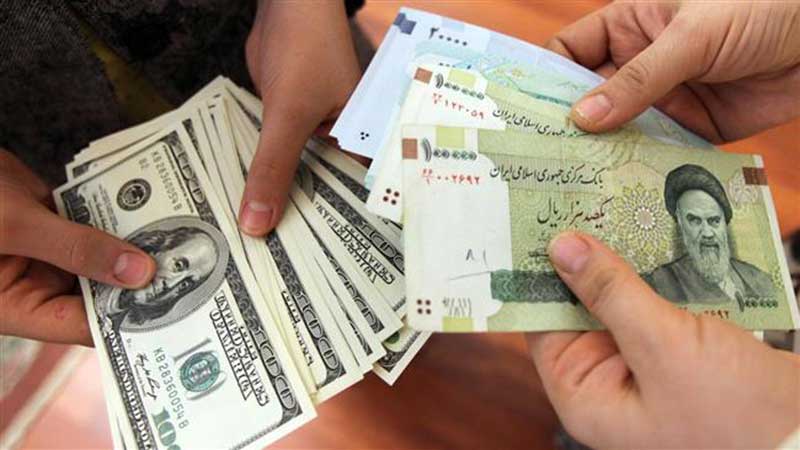
The Iranian currency is Rial (pronounced ‘reeyaal’. When talking money in Iran, you will hear the term “Toman”. Though Toman is an old term and is no longer an official currency but it is still being used on a daily basis in Iranian markets standing for ten Rials. In Tehran banks are open from 07:30 to 15:30 Saturday to Wednesday and 07:30 to 13:30 Thursday. Friday is a public holiday.from 07:30 to 15:30 Saturday to Wednesday and 07:30 to 13:30 Thursday. Friday is a public holiday.
In other cities banks are open from 07:30 to 13:30 Saturday to Wednesday and 07:30 to 12:30 Thursday. Friday is a public holiday. Only selected shops accept Master Card and Visa credit cards.Read more
National Holidays
The official weekend holiday in Iran is Friday although some public and private sector offices are also closed on Thursdays. The following is a list of public holidays throughout the year . However, it should be noted that the dates on the lunar calendar can not be converted into Christian dates as they change constantly on the solar calendar (See CALENDAR): Every Friday, the people in Tehran and other Iranian cities perform their Friday prayers ritual. The one held in Tehran at the Tehran University campus is the largest mass of its kind in the region.
Holidays on the Solar Calendar:
1-4 Farvardin (March 21-24) Nowruz (New Year)
12 Farvardin (April 1) The Islamic Republic Day
13 Farvardin (April 2) Late Nowruz holiday
14 Khordad (April 4) Imam Khomeini’s demise
15 Khordad (April 5) Ann. 1963 uprising
22 Bahman (Feb. 11) Islamic Revolution Day
29 Esfand (March 20) Nationalization of Iranian Oil Industry
Days of the Week
There are, of course, 7 days in an Iranian week; however the week begins on Saturday rather than Sunday and thus ends on Friday. The names of the days in Persian are as follows:
Saturday ~ Shanbeh
Sunday ~ Yekshanbeh
Monday ~ Dowshanbeh
Tuesday ~ Sehshanbeh
Wednesday ~ Chaharshanbeh
Thursday ~ Panjshanbeh
Friday ~ Jom’eh
Friday is always a holiday in Iran, although in some offices there is an extended weekend which covers Thursday too.
Holidays on the Lunar Calendar:
9 Moharram Tasua
10 Moharram Ashura (Martyrdom of Imam Hossein, AS)
20 Safar Arbaeen
28 Safar Demise of the holy prophet(SAWA) and Martyrdom of Imam Hassan (AS)
17 Rabi-ol-Aval Birth of the holy prophet (SAWA) & Imam Jafar Sadegh (AS)
13 Rajab Birth of Imam Ali (AS)
27 Rajab Ordainment Day
15 Shaban Birth of Imam Mahdi (AJ)
21 Ramazan Martyrdom of Imam Ali (AS)
1 Shavval Eid-Al-Fitr
25 Shavval Martyrdom of Imam Jafar Sadegh (AS)
11 Zilqada Birth of Imam Reza (AS)
10 Zihajja Eid-Al-Adha
18 Zihajja Eid-Al-Ghadir
Please note that the holidays on the lunar calendar have been listed here in the order they were observed in the year 1990-91, corresponding to the solar year 1369 and the lunar Hejirah year of 1410-11.
Iran is Situated at the heart of the Middle East.
Unique landscapes such as limpid water springs, pomegranate orchards, pistachio gardens, decampment of nomads in different seasons, starry nights, rocky mountains, endless high and low lands, dense forests of the Alborz Mountain Range, and coastlines of the Caspian Sea, the Persian Gulf and the Sea of Oman are all eye-catching and memorable.
Iran’s landscapes vary remarkably at different seasons. They are at times full of stone and sand, at times full of floodwater, sometimes covered by snow or by lush vegetation. Iranian artists have portrayed Iran’s nature as a sign of diversity and charm in their different and diverse artistic works.
Among significant characteristics of the vast land of Iran is the existence of high mountains as well as flat plains, desert areas, rivers and lakes contributing to unique geographical conditions in which, at any time of the year, and in each section of the country, one of the four seasons is visible. Thus, in winter, swimming and water skiing are possible in the warm waters of the Persian Gulf, and at the same time winter sports, like skiing are possible in the northern and western mountains of the country, while one can enjoy the pleasant spring weather along the shores of the Caspian Sea- at the same time of the year.In fact Iran is a four-season country.
Complexity and diversity of geological and calcareous structures have contributeded to the formation of so many caves in different provinces, specially in Azarbayjan, Kurdestan, and Hamadan, which are attractive to numerous tourists. Visiting some of these caves is highly recommended and they are among important tourism attractions.
The two well-known deserts of Iran, Dasht-e-Loot and Dasht-e-Kavir, covering an area of over 360,000 square kilometers, are among the most interesting yet unknown places.
With more than 500 known mineral water and thermal springs used for different purposes, Iran has an important potential in this regard. Most of these springs attract many people all around the year for recreation and therapeutic purposes.
The coasts of the Caspian Sea, with pleasant sandy beaches, are among the most important tourist attractions in Iran. Moreover, the southern shores and islands of Iran have their own natural beauty and being used as tourism attractions specially in winter. The slopes of Alborz and Zagross Mountains with numerous springs, lakes and wetlands have their own beautiful and eye-catching landscapes.
Iran enjoys considerably variable climates
In January and February, there are three climatic zones in Iran. Shores of the Caspian Sea have mild and relatively cold weather, central parts have typical winter weather, and southern parts enjoy moderate and pleasant weather. Most regions of Iran enjoy pleasant weather in the spring, specially in April. However, the weather in southern regions of Iran grows very hot unexpectedly as early as March.Tourists, who visit the southern coasts of Iran in winter, can enjoy very pleasant weather; while at the same time the cities of Esfahan and Fars provinces are rainy and snowy. In general, in the summer, the weather in most parts of the country is warm but not intolerable. Spring and autumn are a suitable time for touring all around the country. Hotels are usually booked up during national holidays for Norooz (Iranian New Year starting March 21st).
More Information About Iran
Physical situation of the country
Formal Name: The Islamic Republic of Iran.
Short name: Iran.
Term for Citizens: Iranians.
Capital: Tehran.
Date of Establishment of the Islamic Republic of Iran: April 1st, 1979.
Area: 1,648,000 square kilometres.
Time: GMT+3.5
Climate: The climate is dry tropical with very hot summer and cold, with some snow, winter.
Population: 75.1 million people by 2011; growth rate is 1.3 % a year; population density is 46 persons per square kilometre; 71.4% of the population is urban and 28.6% is rural or migrating. Persian (51%), Azerbaijani (24%), Gilaki and Mazandarani (8%), Kurd (7%), Arab (3%), Lur (2%), Baluch (2%), Turkmen (2%), other (1%)
Language: Official language is Farsi. Persian and Persian dialects (58%), Turkic and Turkic dialects (26%), Kurdish (9%), Luri (2%), Baluch (1%), Arabic (1%), Turkish (1%)
Religion: Islam is the official religion; about 98.5% of population is Muslim (Shiite – 89%, Sunni – 9.5%); Iran also has minority groups of Zoroastrians, Jews, Armenians, Assyrians, Catholics and Protestants, all of which are respected.
Education: General education is free and compulsory from the age of six. It comprises 12 years. By 2000 literacy for all Iranians aged 15 and older had reached 76.9 %.
Major industries: Natural gas, oil, petroleum products, food processing, textile.
Major trading partners: Japan, South Korea, Italy, Germany, China, France, United Arab Emirates.
Money: Currency is called Iranian Rial (IRR).
Ecology: Air pollution, especially in urban areas, from vehicle emissions, refinery operations, and industrial effluents; deforestation; overgrazing; desertification; oil pollution in the Persian Gulf; inadequate supplies of potable water.
Health: Basic medical care and medicines are available in the principal cities of Iran.
Culture: Priceless archaeological finds; lots of historical monuments; traditional handicrafts and famous Iranian carpets.
Popular tourist destinations: Tehran, Mashhad, Susa, Persepolis, Isfahan, Hamadan, Shiraz, Yazd, Pasargadae, Kerman, Kermanshah, etc.
Religions in Iran
The official religion of Iran is Islam and Shiism. The thirteenth principle of the Constitution has accepted Christianity, Judaism and Zoroastrian as minor religions that their followers
can perform their rituals in the framework of the law.
Flag of Iran

The Islamic Republic of Iran’s flag consists of three colors: green, white and red, respectively. There is a sign of Allah which is the symbol of Islamic Republic of Iran.
communications
Iran postal system extent to remotest regions of country and each traveler can comminute with farthest world regions by post, telegraph, phone, mobile phone, fax & internet. Various kinds of newspapers in native languages, Persian, Arabic, English & other languages are published daily. Different magazines are published weekly, monthly & annually and various books are published continuously that their information are accessible through computer information bank. Different local, national & international Radio & TV stations always broadcast & telecast programs, in different native languages, Persian & English and
Architecture
Architecture is an integrate part of history, economy, culture and tradition of each society.
The architecture in Iran dates back to 5000 BC to the present with characteristic examples distributed over a vast area from Syria to North India and the borders of China, from the Caucasus to Zanzibar. Persian buildings vary from peasant huts to tea houses, and garden pavilions to “some of the most majestic structures the world has ever seen.
Most important properties of traditional Architecture of Iran include: harmony with the nature and environment and take benefit from natural facilities of the location, harmony with the traditions of all provinces, Iranian architecture portray detail of life, beliefs, moral, ethic code and some other. The essence of traditional Architecture of Iran consists of math and theosophy. As, in ancient Iranian books architecture is named as “alhaseb” and “almohandess”.
The traditional architecture of the Iranian lands throughout the ages can be categorized into the six following classes or styles:
Pre-Islamic:The Parsian style (Achaemenid, Median, Elamite eras), The Parthian style (Parthian, Sassanid eras).
Islamic: The Khorasani style, The Razi style, The Azari style, The Isfahani style
Available building materials dictate major forms in traditional Iranian architecture. Heavy clays, readily available at various places throughout the plateau, have encouraged the development of the most primitive of all building techniques, molded mud, compressed as solidly as possible, and allowed to dry. This technique used in Iran from ancient times has never been completely abandoned. The abundance of heavy plastic earth, in conjunction with a tenacious lime mortar, also facilitated the development of the brick.
Iranian architecture take advantage of abundant symbolic geometry, using pure forms such as the circle and square, and plans are based on often symmetrical layouts featuring rectangular courtyards and halls.
All traditional Persian houses have following sections: Hashti and Dalan-e-vorudi. Entering the doorway one steps into a small enclosed transitional space called Hashti. Here one is forced to redirect one’s steps away from the street and into the hallway, called Dalan e Vorudi. In mosques, the Hashti enables the architect to turn the steps of the believer to the correct orientation for prayer hence giving the opportunity to purify oneself before entering the mosque. A central pool with surrounding gardens
Important partitionings such as the biruni (exterior) and the andaruni (interior)
Persian houses in central Iran were designed to make use of an ingenious system of wind tower that create unusually cool temperatures in the lower levels of the building. Thick massive walls were designed to keep the suns heat out in the summertime while retaining the internal heat in the winters.
Famous Architectural Sites in Iran are; Meidan-e-Emam, Takht-e-Soleyman, Bisotun, Persepolis, Pasargadae, Bam, Soltaniyeh, Tchogha Zabnil. .Iran also enjoys some number of world known villages that has unique architectural feature like Abyaneh in the central part of Iran and Masouleh in the northern part of the country in both of villages it is the nature who is architecture.
Handicrafts
Recent archaeological excavations have shed new light on the earliest arts of the Iranian plateau. These newly discovered prehistoric sites date back to at least 5000 BC, and handsome decorated pottery, some of which is eggshell thin, has been found in great quantities at sites dated 3000 BC and later. Persian art and architecture reflects a 5,000-year-old cultural tradition shaped by the diverse cultures that have flourished on the vast Iranian plateau occupied by modern Iran and Afghanistan. The history of Persian art can be divided into two distinct eras whose demarcation is the mid-7th century AD, when Iranian territory was conquered by Muslims and Iranian people converted to Islam.
Historical Periods
The First inhabitants of Iran were a race of people living in western Asia. When the Aryans arrived, they gradually started mingling with the old native Asians. Aryans were the origin of the people today known as the Indo-Europeans, and are believed to be the ancestors of the people of present India, Iran, and most of Western Europe.
Recent discoveries indicate that, centuries before the rise of earliest civilizations in Mesopotamia, Iran was inhabited by human. But the written history of Iran dates back to 3200 BC. It begins with the early Achaemenids, the dynasty whose under the first Iranian empire blossomed.
Cyrus the Great was the founder of the empire and he is the first to establish the charter of human rights. In this period Iran stretched from the Aegean coast of Asia Minor to Afghanistan, as well as south to Egypt. The Achaeamenid Empire was overthrown by Alexander the Great in 330 BC and was followed by The Seleucid Greek Dynasty.
After the Seleucids, we witness about dozen successive dynasties reigning over the country. Dynasties such as Parthian, Sassanid, Samanid, Ghaznavid, Safavid, Zand, Afsharid, Qajar and Pahlavi. In 641 Arabs conquered Iran. Persians, who were the followers of Zoroaster, gradually turned to Islam and it was in Safavid period when Shiite Islam became the official religion of Iran.
Since Qajar dynasty on, due to the inefficiency of the rulers, Iran intensely begins to decline and gets smaller and smaller. The growing corruption of the Qajar monarchy led to a constitutional revolution in 1905-1906. The Constitutional Revolution marked the end of the medieval period in Iran. During World Wars I and II the occupation of Iran by Russian, British, and Ottoman troops was a blow from which the government never effectively recovered.
In 1979, the nation, under the leadership of Great Imam Khomeini, erupted into revolution and the current Islamic republic of Iran was founded.
Cultural Diversity
Iran is a culturally diverse society, and inter-ethnic relations are harmonious. The predominant ethnic and cultural group in the country consists of native speakers of Persian. But the people who are generally known as Persians are of mixed ancestry, and the country has important Turkic and Arab elements in addition to the Kurds, Baloch, Bakhtyari, Lurs, and other smaller minorities (Armenians, Assyrians, Jews, and others).
Art & Culture
Iran is a culturally diverse society, and inter-ethnic relations are harmonious. The predominant ethnic and cultural group in the country consists of native speakers of Persian. But the people who are generally known as Persians are of mixed ancestry, and the country has important Turkic and Arab elements in addition to the Kurds, Baloch, Bakhtyari, Lurs, and other smaller minorities (Armenians, Assyrians, Jews, and others).
Poetry
Iran is very well known for its poetry. Poems by Iranian poets such as Ferdowsi, Sa’di, Hafez and Khayyam are praised around the globe by many foreign critics as well. Thanks to the richness of Iranian heritage, almost no foreigner touching Persian literature could ever escape its attractions. Perhaps the secret lies in the humane message embedded in most Persian works such as the following poem by Sa’di which appears at the entrance of the Hall of Nations of the UN building in New York as it reads:
“Human beings are members of a whole, In creation of one essence and soul. If one member is afflicted with pain, Other members uneasy will remain. If you have no sympathy for human pain, The name of human you cannot retain”.
Language and literature
Official language of Iran is Persian. Persian serves as a lingua franca in Iran and most publications and broadcastings are in this language.
Next to Persian, there are many publications and broadcastings in other relatively popular languages of Iran such as Azeri, Kurdish and even in less popular ones such as Arabic and Armenian. Many languages originated in Iran, but Persian is the most used language. Persian belongs to Iranian branch of the Indo-European family of languages. The oldest records in Old Persian date to the Achaemenid Empire, and examples of Old Persian have been found in present-day Iran, Iraq, Turkey and Egypt.
Persian is spoken today primarily in Iran, Afghanistan and Tajikistan, but was historically a more widely understood language in an area ranging from the Middle East to India, significant populations of speakers in other Persian Gulf countries, as well as large communities around the World.
Persian, until recent centuries, was culturally and historically one of the most prominent languages of the Middle East and regions beyond. For example, it was an important language during the reign of the Moguls in Indian where knowledge of Persian was cultivated and encouraged; its use in the courts of Mogul India ended in 1837, banned by officials of the East Indian Company (British Colonialism).
Persian scholars were prominent in both Turkish and Indian courts during the fifteenth to eighteenth centuries in composing dictionaries and grammatical works. A Persian Indian vernacular developed and many colonial British officers learned their Persian from Indian scribes.
The name of the modern Persian language is sometimes mentioned as Farsi in English texts.
Iranian Calendar
Iranian official calendar, the Iranian solar calendar is one of the most accurate ones in the world. 21 March, equal 1 Farvardin, is the beginning of the Iranian New Year. Lunar calendar is also used in Iran for performing religious rites. Since the lunar year is 10 days shorter than the solar year, tourists are recommended to arrange their proper traveling time with related agency. Especially in Ramadan month that Muslim Iranians, are fasting and in Muharram are mournful, so these situations influence on daily & current activities and some days in these two month are public holidays. Friday is official bank holiday.
Persian Gardens
The tradition and style in the garden design of Persian gardens has influenced the design of gardens from Andalusia to India and beyond. The gardens of the Alhambra show the influence of Persian Paradise garden philosophy and style in a Moorish Palace scale from the era of Al-Andalus in Spain. The Taj Mahal is one of the largest Persian Garden interpretations in the world, from the era of the Mughal Empire in India.
Art
Iran is home to one of the richest art heritages in world history and encompasses many disciplines including architecture, painting, weaving, pottery, calligraphy, metalworking and stone masonry.The high plateau of Iran has seen the development of many cultures, all of which have added distinctive features to the many styles of Persian art and architecture. Although earlier civilizations are known, the first archaelogical finds of artistic importance are the superb ceramics from Susa and Persepolis (c.3500 B.C.). The choice of biological subjects, simplified into patterns, may be called the formative principle of Persian art. Much of 4th-millennium Iranian art is strongly influenced by that of Mesopotamia. The 3d-millennium art of Elam, found at Sialk and Susa, also follows Mesopotamian styles, and this trend is continued in the less well-known Elam and Urartu art of the 2d millennium.
During the Achaemenian period (550-330 B.C.) a unified style emerges. Luxurious works of decorative art were produced. The Achaemenids evolved a monumental style in which relief sculpture is used as an adjunct to massive architectural complexes. Remains of great palaces reveal plans that characteristically show great columned audience halls. Of far greater artistic importance is the Sassanian art. Adapting and expanding previous styles and techniques, they rebuilt the Parthian capital at Ctesiphon. There a great palace with a huge barrel vault was constructed of rubble and brick. Sassanid architecture is decorated with carved stone or stucco reliefs and makes use of colorful stone mosaics.Basically handicrafts are almost made in every village or city in Iran, but the people of each region are skilled and proficient in the making of one or two types of handicrafts,
Tourists visiting Iran from different countries, find a variety of Iranian handicraft goods, which are interesting and pleasant to them in the traditional bazaars of Iran, especially in larger cities. Yet the kind of goods offered in the traditional bazaars at the present time does not introduce the real collection of Iranian handicrafts. Some of these products are either obsolete or like hand-woven silk cloths are very rare. Silk cloth is produced only in one or two special workshops so that the amount of production is only sufficient for museums and international exhibitions. Nevertheless it can be said that, Iranian handicrafts reach out to interested people and here we intend to review the manner in which contemporary artists produce some of these goods.
Iran’s National Museum consisting of the Archaeological Museum, along with the magnificent collection of the Islamic Museum offers a breathtaking collection of Persian art dating back to some 7 thousand years ago!! The Abguineh museum offers a wonderful exhibition of delicate glass and ceramics housed in an elegant early 20th century building. The Carpet Museum also justifies the worldwide fame of Persian carpet weaving with its display of beautiful new and old carpets created in the workshops of Kerman, Qom, Tabriz, Isfahan and Kashan, etc.At the same time Persian miniatures and calligraphy – two more artistic traditions in which the Iranians excel – can be seen at the Reza Abbasi Museum. The named museums are just a small selection from the fabulous collections to be visited in Tehran.
Persian carpet
The art of carpet weaving in Iran has its roots in the culture and customs of its people and their instinctive feelings. Weavers mix elegant patterns with a myriad of colors. The Iranian carpet is similar to the Persian garden: full of flora, birds, and beasts.
The colors are usually made from wild flowers, and are rich in colors such as burgundy, navy blue, and accents of ivory. The proto-fabric is often washed in tea to soften the texture, giving it a unique quality. Depending where the rug is made, patterns and designs vary. Some rugs, such as Gabbeh, and Gelim have a variations in their textures and number of knots as well. The exceptional craftsmanship in weaving these carpets and silken textile thus caught the attention of the likes of Xuanzang, Jean-Baptiste Tavernier, and Jean Chardin.
Souvenirs
Iranian souvenir is varied in different regions with so many different types from food and drink to clothing or handicrafts. Here’s a most important of all:
East Azarbayjan
East Azarbayjan is reputed for its handicrafts in Iran namely a variety of carpets, rugs, Kilims , Jajeem , satchels, shawls, earthenware, ceramic vessels, baskets, wooden articles, materials woven out of silk or wool, embroidered fabrics, crochet articles, towels, blankets, local shoes, silverware and jewelry. Nuts and dry fruits are also important items of this area and are highly favored everywhere.
West Azarbayjan
A variety of handicrafts are available as souvenirs. These are carpets, rugs, Kilims, Jajeem or loosely woven woolen cloths, wooden articles, leather work, woven articles, baskets and a variety of sweets.
Isfahan
Isfahan is famous for its delicate and beautiful handicrafts, the most important of which are inlaid work engravings, woodwork, filigree work, carpets and miniatures. Local sweets, especially Gaz are very delicious and well known through Iran.
Khorassan
The important and various types of Khorassan handicrafts are: Carpet weaving, silk production, She’rbafi, Felt carpet, Wool making, sculptured work on stone, Turquoise stone, ceramic work and Pipe weaving. Other handmade articles are: Kilim, Giveh, Charoq, Wooden and Metal products, Paintings on leather, etc.
Chahar Mahal Va Bakhtiyari
Different kinds of handicrafts and souvenirs of Chahar Mahal Va Bakhtiyari province are as follows: the famous Chalshotori carpet, tribal carpets and rugs, Chukha, felt, Giveh or a type of local foot ware, Khorjeen or Saddlebags, Jajeem, Kilim, satchels, table cloths and salt cellars and Gaz.
Fars
The handicrafts of Fars province are rich in diversity, the most significant of which are as follows: silver smiting, parquetry and skill-embroidery in Shiraz; giveh making in Abadeh; and ceramics in Estahban; carpet, Jajim , and Gelim weaving in Firuzabad. Other industries like cloth-weaving and glass blowing are scattered throughout the province. Carpets woven by tribes, rose water made in Firuzabad, sweets produced in Fasa, limejuice and plant essences extracted in Shiraz are of the highest quality.
Hormozgan
The handicrafts of Hormozgan province are as follows, earthenware pots known as ‘hableh’, textiles worked with laced gold or silver braids known as ‘golabatoon’, bedding sheets, rugs, carpets, woven baskets and mats, and handicrafts made of shells.
Yazd
Handicraft produced in Yazd province are various, some of which are world famous including carpets with charming patterns, pile less carpets, tirma, brodcaded silk, velvet, blankets, bed-cloths, earthenware, engraving, glassware and leather ware. Being delicate and beautiful, these handicrafts are suitable to be kept as souvenirs. Yazd is also famous for its various sweets, the most well known are Pashmak, Baghlava and Ghotab.
Kermanshah
Kermanshah since long has been one of the most famous handicrafts centers of Iran. The most important handicrafts and gifts of the province that mainly are produced by the villagers and tribes are:
Carpet, Kilim, Jajims or a loosely woven material, Kitchen implements, traditional kitchen wares and wooden articles, Giveh, metal engraving, glassware, felt and leather products, and its famous sweet-meat mainly Kak.
Gilan
The most famous handicrafts of the province are: wooden articles, hand woven textiles, carpets, jajeems , Kilims , silk weaves, earthenware and wooden vessels, statues, felt articles, wicker work, bamboo products, crochet articles, cotton fabrics and ……..
Semnan
Handicrafts in this province are the following: Kilims or coarsely woven carpets, a variety of calico or ‘block printed’ articles, earthenware, ceramics, and hand woven articles can be picked up at the handicrafts center and bazaars.
Sistan Va Baluchestan
In Sistan Va Baluchestan province and specially in the former territory, majority of the inhabitants are employed in this field. Handicrafts of the province can be said to be the following: Kilim weaving, carpet and rug weaving, embroidery including other needle art works, pottery making and jewelry making can be mentioned as the handicrafts of this province.
Zanjan
These plain knives and a variety of pocket knives and switch blades, carpets, ‘Charoq’ filigree work, silver and a variety of ‘Kilim’ and ‘jajim’.
UNESCO World Heritage Sites
Transportation
Air: Many international visitors to Iran arrive by air at Imam Khomeini International Airport in Tehran (IKA) with excellent worldwide connections to destinations such as London, Paris, Milan, Amsterdam, Berlin, Stockholm, Moscow, Istanbul, Dubai, Beijing, Seoul, Bangkok and New Delhi. Airliners operating flights to IKA International Airport include: Lufthansa, Alitalia, Turkish Airlines, KLM, Emirates, Etihad and British Airways as well as domestic airlines such as Iran Air, Mahan Air and Caspian Airlines.
Arriving passengers can take a taxi or a bus into the city. Those with pre-booked accommodation can arrange to be met by a hotel representative. Other Iranian destinations offering some limited international flights include: Mashhad, Shiraz, Bandar Abbas, Esfahan, Tabriz and Zahedan.
Car:Iran can be reached by car from various neighboring countries, although drivers are encouraged to research their journey well in advance. Visitors are not advised to travel overland to Iran from Pakistan and anyone who must travel in this area should exercise extreme caution. We advise that you only travel on main roads and avoid travelling at night if you intending on reaching Iran by car via an international border. The border areas with Afghanistan and Iraq are considered insecure and visitors are strongly advised to avoid travel in these areas. The border with Turkey is frequently used by visitors wanting to access Iran by road.
Rail:Two international train routes to Iran are available; one is from Istanbul to Tehran, with a once weekly departure and the other is from Damascus to Tehran, again a once weekly departure. Journeys are long, but prices are reasonable and overnight services offer sleeping cars that have a capacity for four people.
Sea:Although it is possible to arrive in Iran by using a sea route across the Persian Gulf, this method of arrival is rarely used nowadays, with air travel being considered much more convenient.
Bus:Travelling by bus from Turkey to Iran is feasible, although journey times can be very lengthy. Prices of bus tickets are cheap and there are various levels of comfort available, with first class coaches offering reclining seats, air conditioning.


